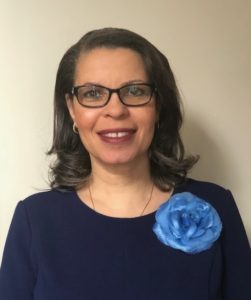Sometimes It Is Because…It Is


I was asked to write a blog on the sensitive topic of educators questioning of best practices for early childhood programs. I came from a large school district where many of my responsibilities were related to compliance. I was not always the decision-maker. I was, as my husband liked to refer to me, “The Hand.” Decisions were made, and I was given a list of rules and told to go forth and make it so! So, when I was approached with the opportunity to write a blog entitled “Sometimes It Is… Because It Is,” I was all in.
I wrote and rewrote and rewrote again. I wanted to establish the uncomfortable idea that, sometimes, resistance to best practices cannot be overcome by good-faith persuasion and research. Why do some in our field question the use of curriculum and assessment and best practices? Consider this example—could a fourth grade teacher decide which parts of the curriculum she would or would not implement, independently of program requirements? Could an eighth grade teacher decide to only assess some students in a few subjects and not the others? I surmised that they could not, but sometimes the only way to ensure teachers would teach their curriculum and follow their assessment requirements was to make it clear that the answer to their questions was “because it is.”
This is a difficult subject. Previous drafts of this discussion did not come out quite right. Those who were trusted to read it, gave me helpful feedback: “Are you saying that no one should be questioned?” Many even volunteered their time and effort to help me get out what I wanted to say, but you, dear reader, should not have to infer or try to imagine my intent.
So, I have decided to throw caution to the wind and just say what I want to say directly.
Say It
Question! Yes, teachers should question! Question the why, the when, the wherefore, and how come. That is how we grow and stretch. That is how we learn and are accountable. When teachers would bring me questions about their curriculum or assessment tools, I would think, “You have absolutely thought of something that I have not, and I will be better for the conversation.” I used to have a plaque in my office that read something to the effect of “If 5 of us are working on a problem and we are all thinking the same thing, then some of us aren’t thinking.” I understand that questioning is imperative, healthy, and a tool that will improve the questioner; the decision-maker; and, in the end, the children and families we serve.
However, after the questioning has occurred and the answers have been exhausted, after the research has been conducted and the alternatives have been vetted, after the decisions are have been made and the path forward has been paved—after that, after all of that—at some point we must move forward and implement these decisions to the best of our ability. We must make it so.
Here are a few examples of requirements that I have had to “make so,” that a teacher would not accept until I had exhausted everything but “that’s the way it is.”
- Going outside means going outside.
- Free choice time every day for early learners is mandatory.
- Early childhood learning environments are to be organized into interests areas and not rows of desks like elementary school classrooms.
I have more, but you will notice that all of these concepts are well-established in early childhood education because of their immense, documented benefits for young children.
Here is the kicker: sometimes teachers’ questions can be answered from research, experience, explanations, anecdotes, theories, practice, etc. Sometimes we can get the answers we need and the earth and moon line up perfectly and all is well but sometimes—sometimes, my friends, we do not get to know the answers. There are many reasons for this. Sometimes a teacher questions a decision or practice when the reasons are private and cannot be shared. Maybe there’s a safety issue, or maybe the reasons are based on a trail of previous decisions with an explanation too long to express to a reluctant teacher’s satisfaction. Sometimes budgetary constraints dictate a specific decision–sometimes, ultimately, something is because it is.
And There It Is—I Said It
I do not say that often, and I do not use it lightly, but I have, and it is. Whether we like the decision or not, understand its origins, agree with the process, or appreciate its intended outcomes, sometimes it is because it is. Further, those of us who are charged with implementing said decision must do so with gusto, to the best of our ability.
Ideally, school leaders and others in charge of compliance would love for everyone to be onboard with this. We hope that, after we have built trust in each other through the questioning and the challenging and through everyday interactions, teachers will conclude that we all have the children’s best interests at heart. We hope that, when faced with the occasional answer “Because it is,” that you will trust that leader and be okay with that. Ideally yes, that’s what we want. Let’s all work towards that.
But in the meantime, early childhood educators must implement all components of their program’s chosen curriculum with fidelity. If the fact that the research shows that this is the way to ensure the best possible outcomes for children is not enough of a reason for some teachers, then…it is because it is. If the research behind completing authentic formative assessment for each child, in all domains, for every checkpoint does not persuade some teachers, then…it is because it is.
I am not sure who, but I feel someone out there needed to hear that.

Support Your Teachers Every Step of the Way
Ensure your teachers are confident and prepared from day one with professional development.